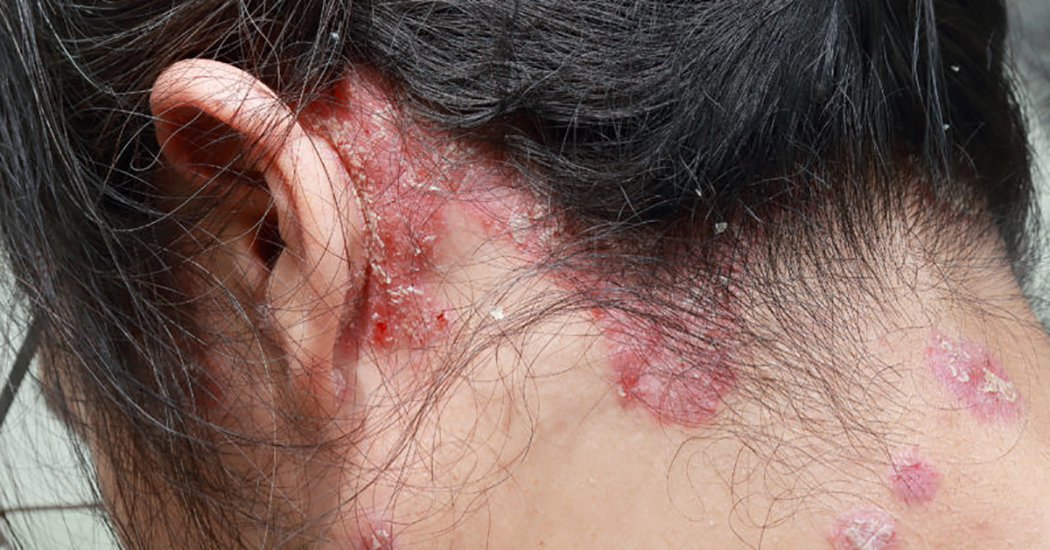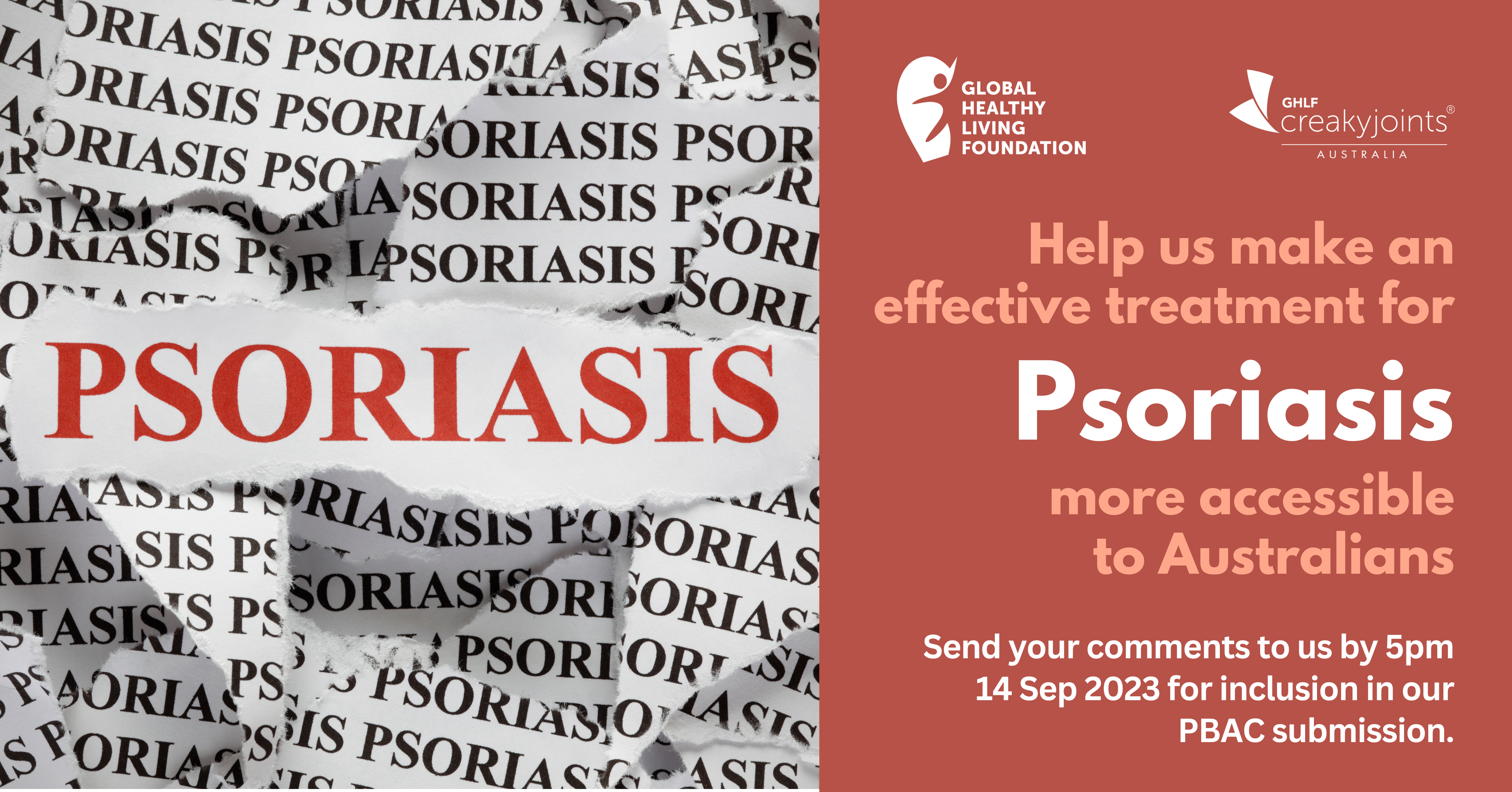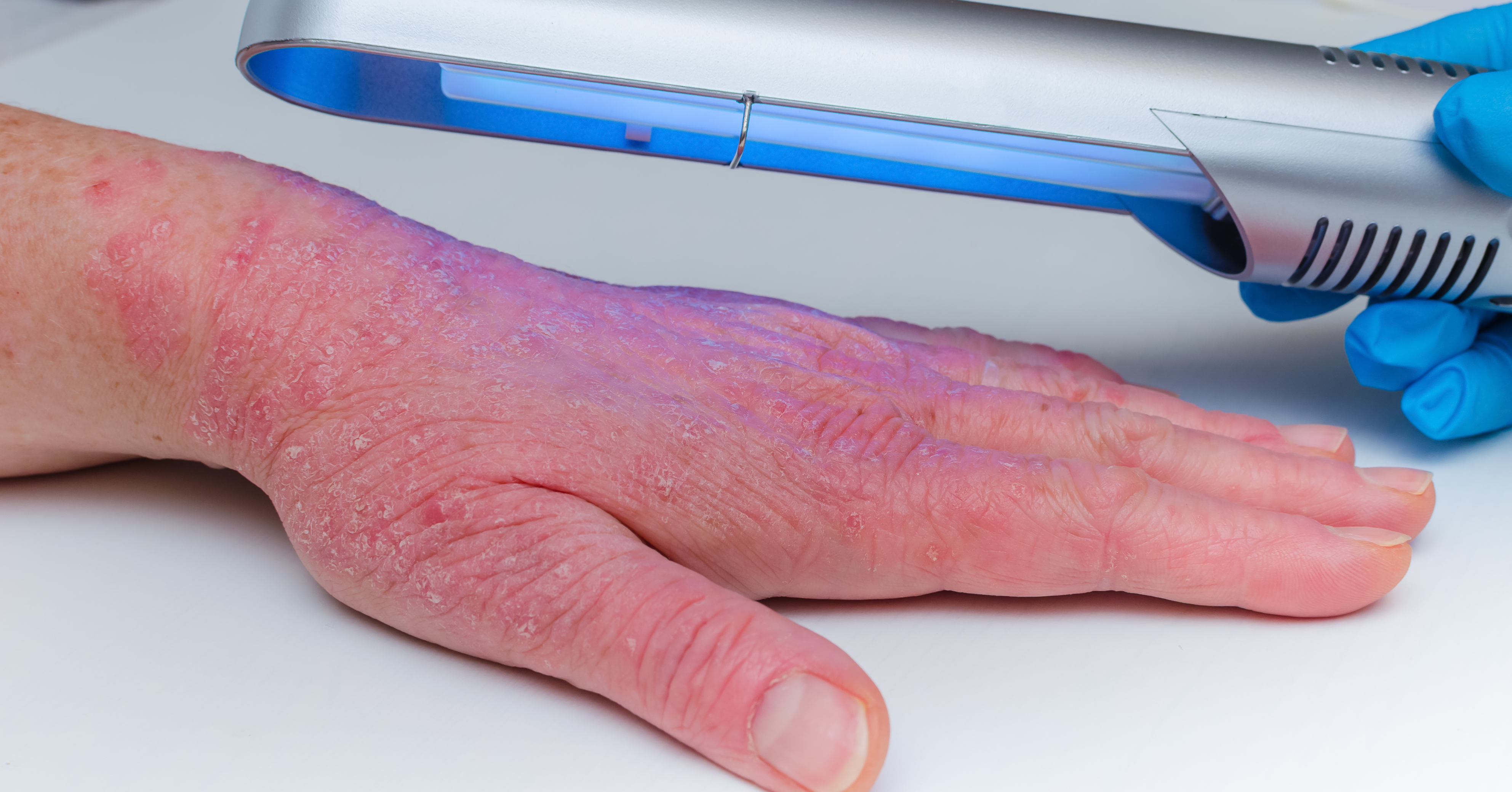Two new breakthrough treatments brings fresh possibilities for those living with chronic plaque psoriasis.... Read more >

Psoriasis, psoriatic arthritis and hair loss: its causes and what to do about it
Psoriasis, psoriatic arthritis and hair loss: its causes and what to do about it
Dealing with these conditions can be difficult enough without the added stress of losing your hair. Luckily, any loss is usually temporary. Here’s how to safeguard your strands.
Published 13 April 2022
If you’re one of the roughly 1.6 million Australians who have psoriasis — a chronic condition that typically causes raised, red patches of skin topped with silvery scales — there’s a good chance that it has impacted your scalp. This also holds true for the more than 40 per cent of people with psoriasis who also have psoriatic arthritis (PsA), a form of arthritis that can appear in combination with psoriasis.
Psoriasis causes skin cells to divide about 10 times faster than normal. The excess cells pile up on the surface of the skin, causing scaly patches of itchy, dry skin. Known as plaques, these lesions often itch, burn, and sting.
How psoriasis and psoriatic arthritis affect the scalp
For many patients, the scalp is the only part of the body where psoriasis occurs — or it’s the first location where the autoimmune disease develops.
Research shows that at least a quarter of people with plaque psoriasis, the most common type of psoriasis, initially present with lesions on the scalp.
“It’s very common for psoriasis to affect the scalp — statistics show a range of 40 to 80 per cent of people with psoriasis have scalp involvement,” says David Bank, MD, assistant clinical professor of dermatology at Columbia Presbyterian Medical Center in New York City. “It may occur in isolation or with psoriasis in other areas.”
Scalp psoriasis can run the gamut from mild (with thin dandruff-like flakes that are hardly noticeable) to severe (in which plaques can be so thick and inflamed that they’re visible through your hair).
Sometimes, in addition to the scalp, plaques also cover nearby areas such as the forehead, back of the neck and the skin around the ears.
The impact of scalp psoriasis and hair loss
It’s not known why the scalp is so susceptible to psoriasis. One possible reason it is such a prime area is that the high follicular density of the scalp (meaning: there are a lot of hair follicles there) reduces natural light exposure. Ultraviolet rays from light exposure can help clear or prevent psoriasis.
Although scalp psoriasis alone involves a small percentage of the body, it can have a profoundly negative effect on a person’s quality of life and self-esteem. But when it leads to hair loss — psoriatic alopecia in doctor-speak — it can be particularly distressing.

“The decrease in hair density is typically mild and difficult for the doctor to see, but of course, we take it very seriously,” says Vinicius Domingues, MD, a rheumatologist in Daytona Beach, Florida, and medical advisor for CreakyJoints US.
Rest assured, once scalp psoriasis is under control, most people with hair loss experience complete regrowth of their hair.
The key is to seek medical help promptly since scarring that results from psoriasis — common in longstanding scalp psoriasis — can cause permanent hair loss.
The connection between hair loss and psoriasis and psoriatic arthritis
There are a few causes of psoriatic alopecia, including the disease itself.
Inflammation
“Psoriasis is an inflammatory condition and when the scalp is inflamed, the hair follicles [where hair is produced] can be affected,” says Mona Gohara, MD, associate clinical professor of dermatology at Yale School of Medicine in New Haven, Connecticut.
Damage from scratching
Trauma to the scalp that often results from scratching or picking at the scaly spots can also trigger hair loss. “Scalp psoriasis can be particularly itchy. Scratching it to remove the scale can aggravate the problem and lead to more hair loss, a response known as the Koebner phenomenon,” says Dr Gohara.
Increased inflammation can, in turn, increase itching. This creates an ever-worsening cycle that can ultimately (though, thankfully, rarely) lead to scarring. Hence the reason mane management requires early intervention. “Once the follicle is scarred, it’s not going to regrow hair,” says Dr Gohara.
Medication side effects
Some medications used to treat psoriasis and psoriatic arthritis are also associated with hair loss, which tends to affect the areas covered in plaques. Hair loss is most common with methotrexate, a type of DMARD (disease-modifying anti-rheumatic drug) that works to quiet the immune system.
“It’s a medication that affects the turnover of cells, including those responsible for hair growth,” Dr Bank explains. While hair loss is not a very common side effect of methotrexate, it can cause 5 to 10 per cent of people to experience hair loss.
Methotrexate in very high doses is used to treat some forms of cancer. However, in Australia, the low doses of methotrexate used to treat psoriasis and other autoimmune conditions are not considered chemotherapy.
Stress
Ironically, because stress is a trigger for psoriasis and psoriatic arthritis, the anguish over losing your hair can aggravate plaques and potentially make hair loss even worse. “People don’t often talk about the stress associated with psoriasis but not being able to style your hair or having to scratch or to have the flakes on your clothes, it’s embarrassing,” says Dr Gohara. “All of that can create stress.”
Treatments to clear scalp psoriasis and stop hair loss
The good news is that there are many effective ways to treat scalp psoriasis. Once your skin clears, your hair will usually grow back.
The bad news is that scalp psoriasis can sometimes be difficult to treat. Hair makes the scalp inaccessible for topical therapies, which are thick and gooey and hard to get in and out of your hair.
“The practicality of applying a cream, ointment, or foam into the scalp makes it difficult for topical treatment of psoriasis of the scalp,” says Dr Gohara. “If you don’t wash your hair every day, who wants to slather creams and ointments on their scalp?”
Treatment depends on the severity of the condition and may include any combination of:
- Medicated or non-medicated topical treatments
- Medicated shampoos and conditioners
- Steroid injections
- Systemic therapies
For psoriasis and psoriatic arthritis, systemic therapy means taking a medication — such as an oral pill, an injection, or an infusion — that helps stop the immune system overactivity that is causing plaques to develop.
As effective as they are, systemic therapies don’t completely erase the need for topical treatment. “They might clear your psoriasis, but most dermatologists will have you on a topical as well — it’s like the cherry on top to help keep your scalp clear,” says Dr Gohara. The need for topical treatments should be lessened, though, when you’re on a systemic therapy.
(See our Psoriasis Treatments section for more information about treatments currently used in Australia.)
It’s important to be aware that people lose hair for many reasons, so if treatment isn’t helping your hair loss, be sure to tell your healthcare provider. Your hair loss could be caused by something other than scalp psoriasis.
For instance, people with psoriasis are at greater risk of developing alopecia areata, an autoimmune disease that develops when the body attacks its own hair follicles, which can cause hair loss. Your healthcare provider can help determine the cause of your hair loss.
Tips for a healthy scalp and hair with psoriasis and psoriatic arthritis
Psoriasis and psoriatic arthritis are chronic conditions that can flare-up. These tips for treating your tresses (and your scalp) with TLC can help prevent or manage a flare and a subsequent bout of hair loss:
Brush and comb hair gently
“Psoriasis scale can adhere to the hair, which gets pulled out when the scale is removed,” says Dr Bank. Instead of forcefully removing the scale by picking at it, aim to first loosen it by gently brushing or combing and then remove it by washing with a salicylic acid or coal tar shampoo.
Be sure to keep nails short to minimize hair breakage and gently blot and squeeze — don’t rub — post-shampoo with a soft T-shirt or microfibre towel to remove excess water.
Scratching, scraping or irritating your scalp can trigger a psoriasis flare.
Shampoo regularly
“Psoriasis responds well to frequent hair washing,” says Dr Bank. “People often decrease hair washing because they erroneously think their scalp is dry and that the additional shampooing is worsening the condition.”
Dryness is due to the build-up of skin cells; shampooing regularly with a medicated shampoo (twice a week for maintenance) breaks down or softens the crusty scales so they’re easier to remove without damaging the hair or further irritating the scalp. It helps make topical medications more effective as well.
Condition regularly
Dry hair is more likely to break, which can lead to hair loss. If medicated shampoo is overly drying, alternate it with a gentler, non-medicated shampoo.
Be cautious about colouring your hair
Don’t dye your hair unless your psoriasis is under control, advises Dr Domingues. “Putting chemicals on an already inflamed area can worsen your condition.”
Minimise the use of heat
Allow your hair to air dry or use a blow dryer on the lowest setting. Don’t let curling irons, flat irons or other thermal instruments touch your scalp. The heat can irritate or burn your scalp, which can trigger a flare.
Avoid tight hairstyles
Pulling too tightly on the hair can irritate the scalp and cause a flare. Over time, the continuous tension on the hair follicles caused by the constant pulling of hair can lead to hair loss.
This article has been adapted, with permission, from a corresponding article by Karyn Repinski on the CreakyJoints US website. Some content may have been changed to suit our Australian audience.




This Post Has 0 Comments